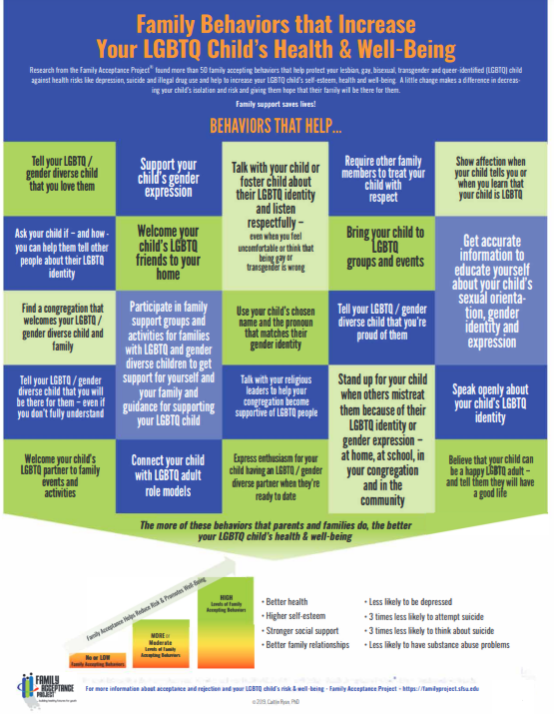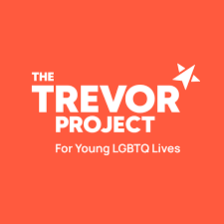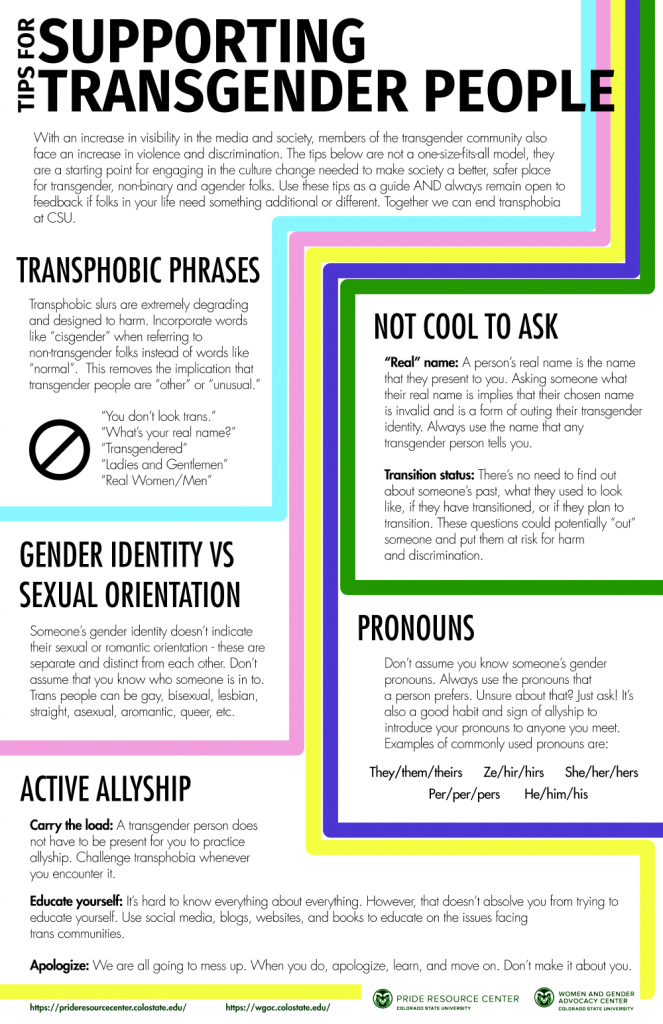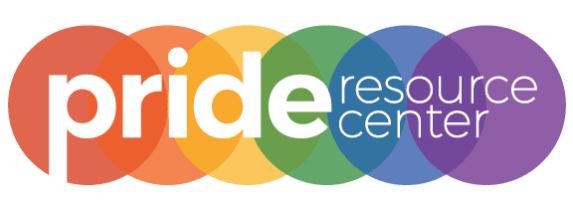Supporting LGBTQIA+ People
There are many ways to show support, advocate for, and be an ally to the LGBTQIA+ community. Check out some resources below.
Listen to our students' stories
Looking to hear LGBTQIA+ students talking about their identities? Check out this podcast featuring our students talking about their experiences! DJ EJ, host of “Slouch Couch” interviews mentors and other people involved at the PRC about their experiences being a part of the LGBTQ+ community and what their identity means to them.

Family Acceptance Project
The Family Acceptance Project® is a research, intervention, education and policy initiative to prevent health and mental health risks and to promote well-being for lesbian, gay, bisexual, transgender and queer-identified (LGBTQ) children and youth, including suicide, homelessness, drug use and HIV — in the context of their families, cultures and faith communities.
This is a great resource to help families show love and support to their LGBTQIA+ kid – outlining specific behaviors that can increase health outcomes and livelihood for queer and trans youth.

Trevor Project
The Trevor Project is the leading suicide prevention and crisis intervention nonprofit organization for LGBTQ young people. We provide information & support to LGBTQ young people 24/7, all year round.
The Trevor Project provides resources to learn about gender, sexuality, mental health, allyship behaviors and more.

AN INTRODUCTION TO PRONOUNS & GENDER INCLUSIVE LANGUAGE
Supporting Transgender People

CSU GENDER SUMMIT - GENDER INCLUSION FOR THE TRANS & NON BINARY COMMUNITY
To view the slides, please click here.

